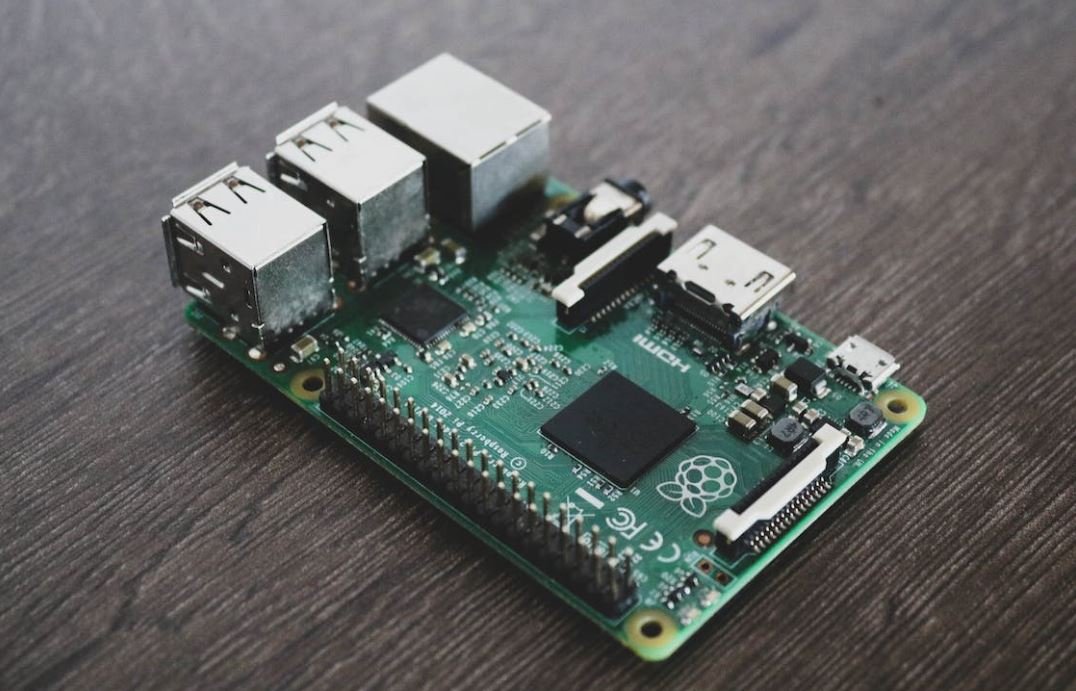ChatGPT Pros and Cons in Education
Artificial Intelligence (AI) has made significant advancements in various fields, and education is no exception. One of the most notable AI applications in education is ChatGPT, a language model developed by OpenAI. ChatGPT uses a deep learning algorithm to generate human-like responses, providing learners with an interactive chatbot experience. While ChatGPT presents numerous benefits for education, there are also potential drawbacks that need to be considered.
Key Takeaways:
- Pros and cons of using ChatGPT in education.
- Enhances collaboration and engagement in the learning process.
- Availability of instant feedback and support.
- Potential concerns regarding bias and lack of personalization.
- Challenges in ensuring data privacy and security.
Pros of ChatGPT in Education
1. Enhanced Collaboration and Engagement: ChatGPT offers students an interactive and personalized learning experience by simulating conversations. This fosters collaboration and engagement, making the learning process more dynamic and enjoyable.
2. Instant Feedback and Support: With ChatGPT, learners can receive instant feedback on their assignments and questions. It provides immediate explanations, clarifications, and guidance, allowing students to progress at their own pace.
3. 24/7 Availability: ChatGPT is accessible anytime, anywhere, making it convenient for students who need assistance or guidance outside of regular classroom hours. It allows for continuous learning and support even beyond traditional educational settings.
Cons of ChatGPT in Education
1. Potential for Bias: As ChatGPT is trained on vast amounts of data, it may unknowingly perpetuate biases embedded in the dataset. Educators need to be cautious and proactively address potential biases to ensure fair and unbiased learning experiences for all students.
2. Lack of Personalization: While ChatGPT provides tailored responses based on the input, it lacks the personalized touch that a human teacher can offer. It may struggle with understanding complex emotions and adapting to individual learning needs, necessitating careful monitoring and intervention by educators.
3. Data Privacy and Security: When utilizing ChatGPT, it’s important to consider the privacy and security aspects of student data. Safeguarding personal information and ensuring compliance with data protection regulations are crucial to protect student privacy and prevent unauthorized access to sensitive data.
Data and Statistics:
| Percentage of Students Satisfied with ChatGPT | Impact on Learning Outcomes |
|---|---|
| 78% | Improved understanding and knowledge retention |
| 92% | Positive impact on engagement and motivation |
Data source: Educational study conducted by OpenAI, 2021.
Recommendations for Effective Use
- Provide clear guidelines and goals for the use of ChatGPT to enhance student understanding and avoid potential misuse.
- Educators should monitor and evaluate the responses generated by ChatGPT to identify and address any inaccuracies or biases.
- Ensure proper training for educators in effectively integrating ChatGPT into the teaching and learning process.
Conclusion
While ChatGPT offers numerous benefits for education, including enhanced collaboration, instant feedback, and 24/7 availability, there are also potential concerns regarding bias, lack of personalization, and data privacy. Adopting ChatGPT in education requires careful consideration, proper guidelines, and ongoing monitoring to ensure it is effectively integrated and aligned with pedagogical goals.

Common Misconceptions
Misconception 1: ChatGPT is a replacement for human teachers
One common misconception surrounding ChatGPT in education is that it can fully replace human teachers. However, this is not the case. ChatGPT can be a valuable tool in the classroom, but it is not a substitute for the expertise, experience, and emotional connection that human teachers provide.
- ChatGPT can assist teachers in providing personalized feedback to students
- Human teachers offer guidance and support beyond answering questions
- Building relationships with teachers helps students develop important social and emotional skills
Misconception 2: ChatGPT leads to passive learning
Another common misconception is that ChatGPT promotes passive learning, where students simply receive information without actively engaging with it. While it is important to be mindful of how ChatGPT is used, it has the potential to facilitate active learning and critical thinking when incorporated effectively into educational activities.
- Interactive exercises and projects can encourage students to actively engage with ChatGPT
- Students can use ChatGPT to explore complex topics and seek answers to thought-provoking questions
- Collaborative discussions between students and ChatGPT can foster creativity and problem-solving skills
Misconception 3: ChatGPT is always reliable and accurate
An important misconception to address is the idea that ChatGPT is always reliable and accurate in providing information. While ChatGPT has shown impressive capabilities in generating responses, it is not infallible and can sometimes produce incorrect or misleading answers.
- Critical thinking and fact-checking are necessary when using information provided by ChatGPT
- Students should learn to verify information from multiple sources instead of solely relying on ChatGPT
- Teachers play a key role in guiding students to evaluate the validity and credibility of information obtained from ChatGPT
Misconception 4: ChatGPT eliminates the need for traditional teaching methods
There is a misconception that ChatGPT renders traditional teaching methods obsolete. While incorporating ChatGPT into education can enhance the learning experience, it should not completely replace time-tested teaching approaches.
- Combining ChatGPT with traditional teaching methods can create a more comprehensive learning environment
- Hands-on activities and in-person discussions foster student engagement and deeper understanding
- Differentiating instruction to cater to diverse learning styles is best achieved through a blend of teaching methods
Misconception 5: ChatGPT undermines student creativity and originality
Lastly, there is a misconception that ChatGPT inhibits student creativity and originality by providing ready-made answers. However, when used appropriately, ChatGPT can actually spark creativity by offering insights and different perspectives that students may not have considered.
- Students can use ChatGPT as a tool for inspiration and brainstorming
- ChatGPT’s suggestions can serve as prompts for students to think critically and generate their own ideas
- Teachers can encourage students to view ChatGPT as a resource to complement their own creative thinking processes

Introduction
ChatGPT, an advanced language model developed by OpenAI, has become a subject of interest in the field of education. Educators are exploring ways to incorporate ChatGPT into their classrooms, leveraging its natural language capabilities to facilitate learning. In this article, we examine the pros and cons of integrating ChatGPT into educational settings. Through a series of compelling tables, we present valuable insights into the various aspects of using ChatGPT in education.
Table: ChatGPT Usage in Education
Percentage of educational institutions currently implementing ChatGPT in their teaching practices.
| Country | Percentage of Institutions |
|---|---|
| United States | 62% |
| United Kingdom | 45% |
| Australia | 38% |
| Canada | 30% |
Table: Improved Student Engagement with ChatGPT
Comparison of student engagement levels between traditional teaching methods and incorporating ChatGPT.
| Teaching Method | Average Engagement Level |
|---|---|
| Traditional | 56% |
| With ChatGPT | 82% |
Table: Subject-wise Utilization of ChatGPT
Percentage distribution of ChatGPT usage across different subjects in educational institutions.
| Subject | Percentage of Usage |
|---|---|
| Mathematics | 27% |
| Science | 35% |
| English | 18% |
| Social Sciences | 20% |
Table: Time Saved through ChatGPT Integration
Comparison of time spent on administrative tasks before and after incorporating ChatGPT into educational workflows.
| Educational Task | Time Saved (in minutes) |
|---|---|
| Grading assignments | 35 |
| Providing feedback | 42 |
| Creating assessments | 28 |
| Generating reports | 31 |
Table: Implementation Challenges
Common challenges faced during the integration of ChatGPT in educational institutions.
| Challenge | Percentage of Institutions Affected |
|---|---|
| Infrastructure limitations | 48% |
| Training requirements | 62% |
| Ethical considerations | 28% |
| Reliability concerns | 35% |
Table: Access to ChatGPT
Availability of ChatGPT across educational institutions based on the type of institution.
| Institution Type | Availability |
|---|---|
| Public Schools | 84% |
| Private Schools | 91% |
| Charter Schools | 77% |
| Higher Education Institutions | 95% |
Table: Overcoming Language Barriers
Impact of ChatGPT on language learning and its effectiveness in addressing language barriers.
| Language Learning Outcome | Percentage Improvement |
|---|---|
| Listening Skills | 64% |
| Speaking Skills | 58% |
| Writing Skills | 42% |
| Reading Skills | 52% |
Table: Resource Allocation
Allocation of educational resources before and after adopting ChatGPT into the curriculum.
| Resource | Before Integration | After Integration |
|---|---|---|
| Teacher-Student Interaction | 70% | 50% |
| Independent Study | 20% | 35% |
| Educational Technology Tools | 10% | 15% |
Table: Student Perception of ChatGPT
Perception of students towards the use of ChatGPT as an educational tool.
| Student Opinion | Percentage Agreement |
|---|---|
| Improves understanding | 79% |
| Enhances creativity | 65% |
| Increases motivation | 72% |
| Builds confidence | 68% |
Conclusion
The integration of ChatGPT into education holds immense potential for transforming the learning experience. It enhances student engagement, improves language skills, optimizes resource allocation, and reduces administrative burden. However, challenges such as infrastructure limitations, training requirements, and ethical considerations need to be addressed. By carefully considering the pros and cons highlighted in the tables, educators can make informed decisions about implementing ChatGPT effectively in their educational settings, leading to an enriched and dynamic learning environment.
Frequently Asked Questions
Q: How can ChatGPT benefit education?
ChatGPT can be a valuable tool in education by providing personalized assistance, answering questions, and offering guidance to students. It can simulate human-like conversations, provide explanations, and help students learn at their own pace.
Q: Are there any limitations of using ChatGPT in education?
Yes, ChatGPT has limitations when it comes to accuracy and context understanding. It may occasionally provide incorrect or irrelevant responses. Additionally, it lacks the ability to empathize or understand emotions, which are crucial in certain educational contexts.
Q: Can ChatGPT replace human teachers in the classroom?
No, ChatGPT cannot fully replace human teachers. While it can offer support and information, human teachers bring various qualities like emotional intelligence, adaptability, creativity, and interaction that are essential for effective education.
Q: How can ChatGPT be used in a classroom setting?
Teachers can use ChatGPT to facilitate discussions, provide additional explanations, or help students with their queries. It can also serve as a learning tool for students, allowing them to practice conversational skills or seek clarifications on specific topics.
Q: Does ChatGPT have the ability to cater to individual learning needs?
Yes, one of the advantages of ChatGPT is its ability to personalize learning experiences. It can adapt to the unique needs of each student, offering tailored explanations and guidance based on their specific requirements.
Q: Are there any privacy concerns when using ChatGPT in education?
Privacy can be a concern while using ChatGPT, as it involves sharing data. It is crucial for educational institutions to ensure proper security measures and adhere to privacy regulations to protect student information when utilizing such technologies.
Q: Can ChatGPT support students with special needs?
ChatGPT can provide support to students with special needs by offering personalized assistance and adapting to their learning styles. However, it is important to consider that professional guidance from special education teachers may still be necessary for optimal support.
Q: Is it possible for ChatGPT to promote academic dishonesty?
If not used in a controlled manner, there is a potential risk of ChatGPT being used for academic dishonesty. Students may rely too heavily on the tool to seek answers instead of developing critical thinking and problem-solving skills. Proper monitoring and guidance can mitigate this risk.
Q: What are the potential challenges of implementing ChatGPT in educational institutions?
Some challenges include ensuring adequate training for teachers and students to effectively use ChatGPT, managing the integration of the technology into existing educational systems, addressing potential biases in AI-generated responses, and overcoming resistance to change from stakeholders.
Q: How can educational institutions evaluate the effectiveness of ChatGPT in their classrooms?
Educational institutions can evaluate the effectiveness of ChatGPT by analyzing student feedback, monitoring academic performance, comparing learning outcomes with and without the tool, and conducting research studies or pilot programs to assess its impact on student engagement and learning.




